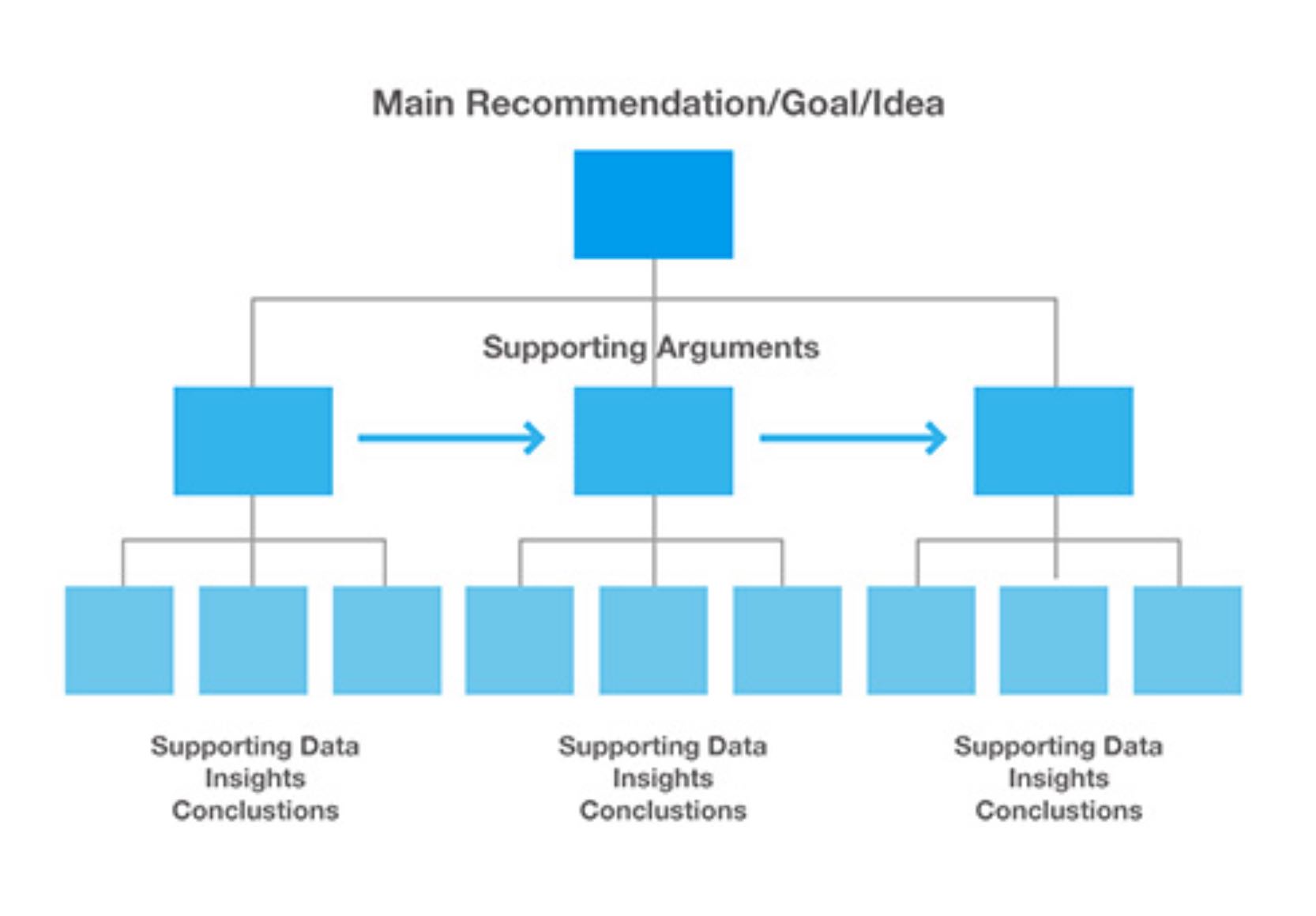As a corporate strategy professional, I execute and coordinate all of the key activities of the firm that span multiple business units and functions. This involves orchestrating company-wide planning for the Board of Directors and executive leadership team on the firm’s long-term strategic direction, annual operating plan, budgets, capital investment strategy, as well as informing executive thinking on global industry trends: competitive, regulatory, macroeconomic, technology, and consumer trends. As you can imagine, interacting with many people both inside and outside my team is a must, and this requires a great deal of communication.
While communication can take many shapes, I’ve noticed that what really differentiates good from great communication is a seemingly trivial thing that we all do every day – writing.
Writing is something that I started practicing from day one of my first job and frankly I’m still learning to this day. Recently, I came across the book “The Pyramid Principle” by Barbara Minto, which gives an in-depth view on a framework that McKinsey consultants use to deliver effective writing. This post will summarize the key ideas in the book and how you can apply the framework to your job.
1. What is the Minto Pyramid Principle?
The Pyramid Principle was created by Barbara Minto, the first female MBA hire by McKinsey, who led the Firm’s training in the 70s. The basic idea is to present information like a pyramid. The main recommendation, goal, or idea is supported by a set of arguments, and each argument is further supported by data, insights, or conclusions.
Figure: Pyramid Principle, Barbara Minto: “MECE: I invented it, so I get to say how to pronounce it” (Source: McKinsey)
This approach will help your writing in three ways:
- Focus the reader’s attention on what matters the most
- Enable them to follow your logic easily
- Save the reader time by making your writing easily glanceable
2. Start with a strong introduction
A powerful introduction onboards the reader, clarifies the burning issue, activates the audience by posing a question, and introduces the objective of the writing. In other words, it consists of four components: situation, conflict, question, and answer.
Situation (S)
Start by establishing the context and background. This should be fact based according to either mutual understanding or reliable data and research.
S = “The number of M&A transactions within the wealth and asset management space doubled last year, driven specifically by players who want to grow their alternative investment capabilities. Industry research has shown…”
Conflict (C)
Make the burning issue clear to everyone in order to build a sense of urgency and focus attention on what you have to say next.
C = “However, we haven’t executed any M&A transactions…”
Question (Q)
Construct your question as a logical extension of the conflict. It doesn’t need to literally be a question, but it should serve as a transition step to your answer.
Q = “Should we revisit our growth strategy and consider inorganic means of achieving growth?”
Answer (A)
This is where you can provide the real meat by proposing the solution that the reader is now waiting for.
A = “We need to build a more robust M&A pipeline that evaluates potential targets and moves to the execution phase with more agility. This can be achieved by…”
3. Organise your overall argument
The three key steps to constructing a logical argument are:
- Lead with the answer
- Group and summarize your supporting arguments
- Logically order your supporting ideas for each argument
Lead with the answer
Optimize your reader’s time and manage their expectations up front. As much as people claim to like detailed documents, they dislike confusion and delay even more. People are used to jumping to conclusions and become impatient when they can’t find the main point of the document.
Group and summarise your supporting arguments
Create strong ties between your parent argument and your supporting arguments. The basic case you are making should be comprehensible to someone who just glances through the titles and subtitles of your document. This allows readers to gain a quick overview and to delve deeper into the content if needed. Using a parallel structure can greatly improve readability.
Logically order your supporting ideas for each argument
Minto introduces two different ways of logical organizing your supporting ideas: deductive reasoning and inductive reasoning. Deductive reasoning moves from generalized principles, which are known to be true, to a specific conclusion. For example, money is important for business, we are a business, therefore money is important to us. On the other hand, inductive reasoning moves from specific instances to a generalised conclusion. For example, we need money for human resources, server maintenance, and marketing, therefore money is important to us.
In business writing, inductive reasoning is used more often. This is because generalized principles, used in deductive reasoning, are already part of a shared context that is widely understood. With inductive reasoning, each of your arguments should be MECE:
- Mutually exclusive – they each cover different aspects to support your main argument, and
- Collectively exhaustive – together they cover all crucial questions that people have regarding your argument.
4. How to make the most of the Minto Pyramid Principle?
Before doing any sort of writing, whether it’s a strategy deck, a due diligence report, a procedure document, or even a simple email, try to organize your points in the structure described above.
Although this type of writing structure is not completely new – we were taught to write in a similar style for our essays back in high school – we need to be constantly mindful of this structure in order to make sure that it becomes a natural part of our writing.
Knowing this is easy.
Applying it is harder.
Jason Oh works in the Strategy/M&A – Global Wealth & Asset Management team at Manulife Investment Management. Previously, he was a Strategy Consultant at EY and Novantas with industry focus in the financial services sector – advised on corporate and portfolio strategy, commercial due diligence, and business transformations.
Image: Pexels

